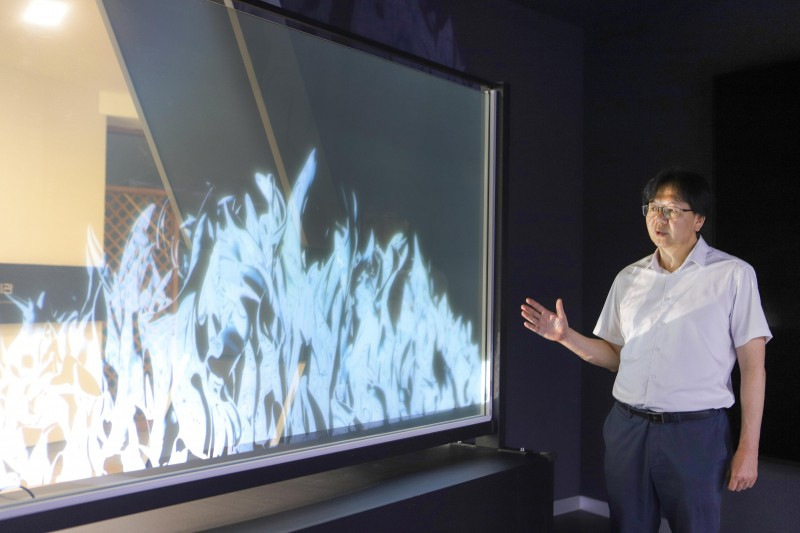Massive 100-inch transparent screen set to enter production — scientists claim it will be 10 times cheaper than transparent OLEDs
Researchers say the screen can work both indoors and outdoors, and can be adjusted to become more or less transparent depending on user needs.

Scientists have devised a new approach to making large, transparent screens at low cost — and they hope it could lead to more affordable transparent TVs in the near future.
Using a new kind of film material, scientists have developed a 100-inch nano transparent screen (NTS) that is as thin as a human hair and capable of showing detailed images with a high degree of color and light clarity.
In addition to its light and flexible appearance, the panel's transparency can be adjusted — with the screen capable of showing the most detail when at its most opaque. It is also highly reflective to targeted light, producing clear images when hit with a beam from a powerful projector, and has a lossless 170-degree viewing angle on either side.
Researchers at the Korea Institute of Machinery and Materials (KIMM), in collaboration with the private company Meta2People have also started to commercialize the NTS, which is made in a roll-to-roll process in which a sheet of film is treated with tiny particles of titanium dioxide.
These nanoparticles give the NTS its durability and improve the optical quality of the film, the scientists said, meaning images projected onto it remain clear. The film is also layered with a kind of crystal polymer known as a polymer dispersed liquid crystal (PDLC) film. By applying an electrical field to the crystals, the PDLC can be made more or less transparent — allowing the screen to become more opaque when users want to see more detail on the screen.

Purchasing conventional transparent OLED screens would cost KRW 100 million (approximately $72,000), the researchers added. But their new panel would cost just one-tenth of that figure. That's because the manufacturing process is easy to replicate due to its relative simplicity, they claimed. It can already be replicated in existing manufacturing conditions and is highly resistant to extreme heat and cold — meaning it can be used indoors and outdoors.
"The technology for manufacturing NTSs is a cutting-edge, innovative technology created through the combination of nanomaterials and nanomanufacturing technology with existing IT technologies," said Jun-Ho Jeong, principal researcher at KIMM in a statement. "Going forward, we will focus on research and development to continuously improve the quality of NTSs and lead the popularization of transparent screens."
Sign up for the Live Science daily newsletter now
Get the world’s most fascinating discoveries delivered straight to your inbox.
The researchers have only started on their journey to commercialize the NTS screen, but they have patented their technology in collaboration with scientists at Meta2People.
Rory Bathgate is a freelance writer for Live Science and Features and Multimedia Editor at ITPro, overseeing all in-depth content and case studies. Outside of his work for ITPro, Rory is keenly interested in how the tech world intersects with our fight against climate change. This encompasses a focus on the energy transition, particularly renewable energy generation and grid storage as well as advances in electric vehicles and the rapid growth of the electrification market. In his free time, Rory enjoys photography, video editing and science fiction. He joined ITPro in 2022 as a graduate, after completing an MA (Hons) in Eighteenth-Century Studies at King’s College London. You can contact Rory at rory.bathgate@futurenet.com.










